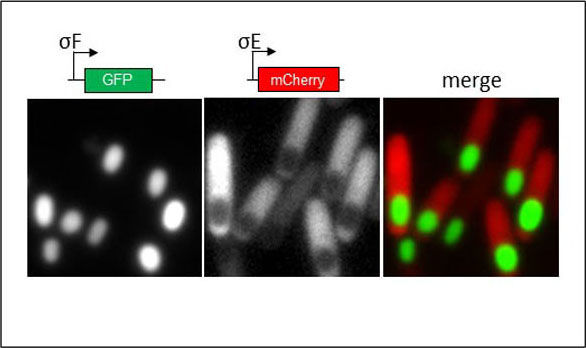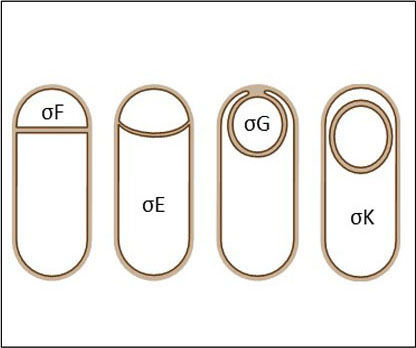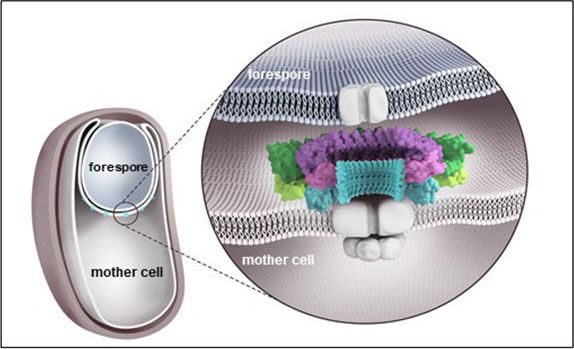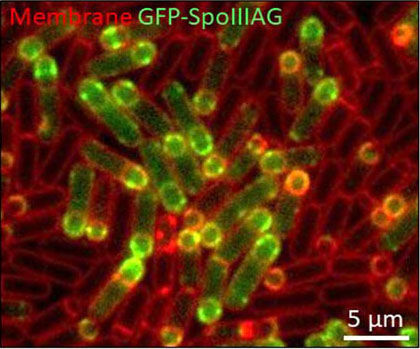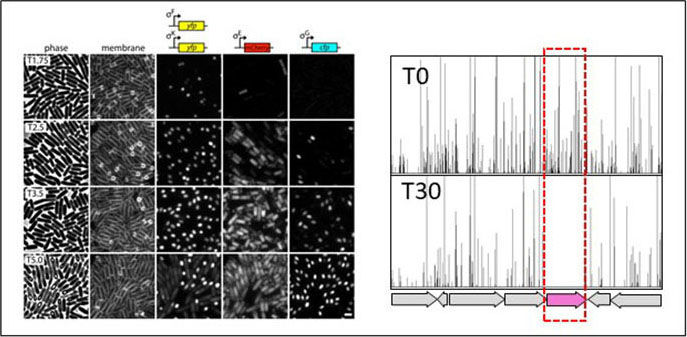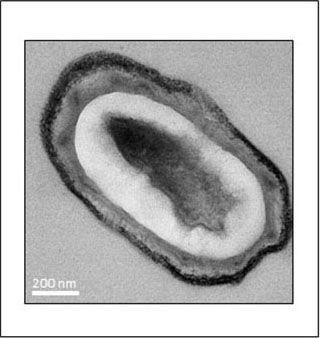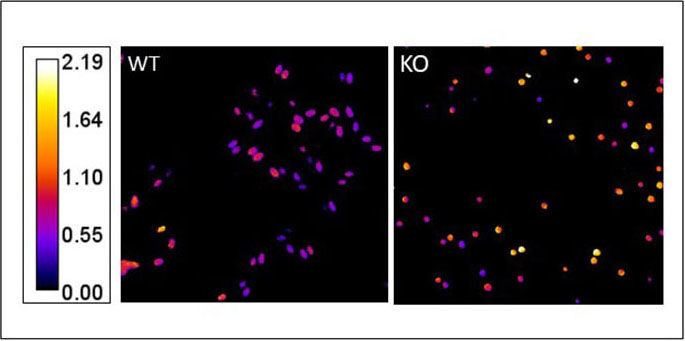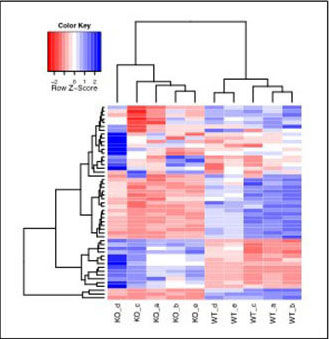Research
|
| The Rodrigues lab focuses on different aspects of spore formationIn response to starvation stress, Bacillus subtilis and its relatives develop into a dormant cell type called a spore. The first morphological event in spore formation is the formation of an asymmetric septum that generates two cells: a large mother cell and smaller forespore (that becomes the spore). Next, the mother cell membrane migrates around the forespore in a phagocytic-like process called engulfment. As a result of engulfment, the forespore becomes internalized inside the mother cell where it matures into the spore and becomes dormant. Once the spore is mature, the mother cell lyses and releases the spore into the environment. We study how the mother and forespore communicate with each other during spore formation. We are also investigating the molecular mechanisms underlying how the spore envelope develops during the process of engulfment and afterwards, and how spore envelope assembly is coordinated with other important processes during spore development. Finally, we are also interested in the physiological changes the developing spore goes through as it prepares for dormancy. |
Specialized Secretion during Spore FormationAt the end of engulfment the forespore becomes internalized inside the mother cell, and loses contact with the external environment. How does the spore develop to maturity if it becomes isolated from the external environment so early in development ? Our studies and others suggest that the mother cell and forespore are connected by a putative new type of specialized secretion system, called the A-Q complex. This complex appears to function as a primitive “umbilical-cord”, allowing the mother to nurture the forespore towards maturity. We are interested in answering important questions relating to this complex: 1) What does this complex transport, and what role do the transported molecules play in spore development?; 2) What is the structural architecture of the A-Q complex? and 3) What is the complete list of parts of the A-Q complex? |
|
|
| Morphogenesis of the Spore EnvelopeThe bacterial cell envelope plays a critical role in cell size, shape and integrity. In the past 20 years, research on the assembly and maintenance of the bacterial envelope during growth and division has soared, driven in part by the need to understand how bacteria generate resistance to antibiotics that target these processes, but also because so little is known about how bacteria build their envelope - many unknown proteins play a role in envelope morphogenesis that could be novel drug targets. This is also the case for bacterial spores for which no drugs exist that target spore morphogenesis. Although spore formation is largely restricted to single-membrane, Gram-positive bacteria, the spore contains a double-membrane envelope, similar to Gram-negative bacteria. Thus, spore development has also emerged as a unique model system for dissecting the similarities and differences of building the cell envelope in single and double membrane bacteria, with implications for understanding bacterial evolution. But how the spore develops from a seemingly featureless cell compartment into an ovoid spore with a highly-resistant, multilayered cell envelope remains poorly understood. We are focused on defining the function of poorly-characterized and novel factors implicated in spore envelope morphogenesis. |
Physiology of Spore DevelopmentIt takes between 7 to 8 hours to produce a metabolically dormant Bacillus subtilis spore. What are the physiological changes the developing spore goes through as it becomes dormant and how do these changes compare to other dormant states? Since the spore develops within the mother cell, we are also interested in understanding the role of the mother cell in spore metabolic dormancy. |
|

